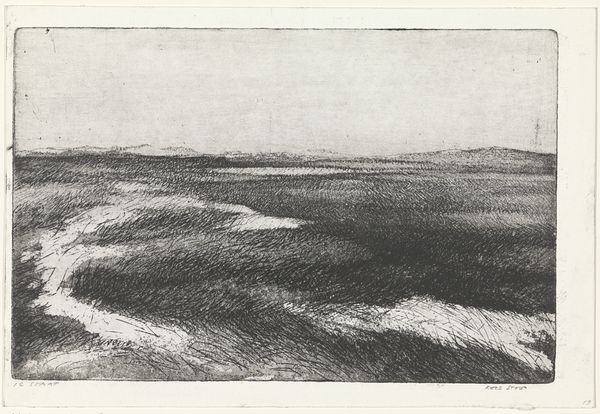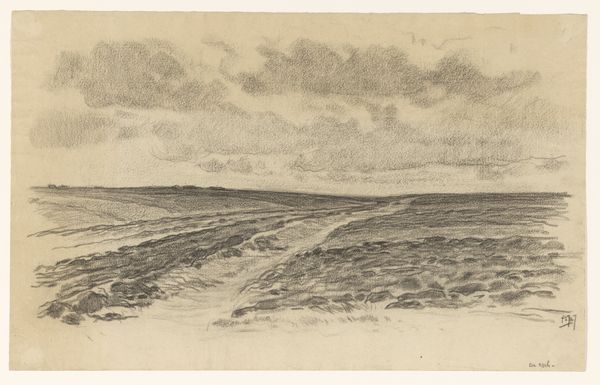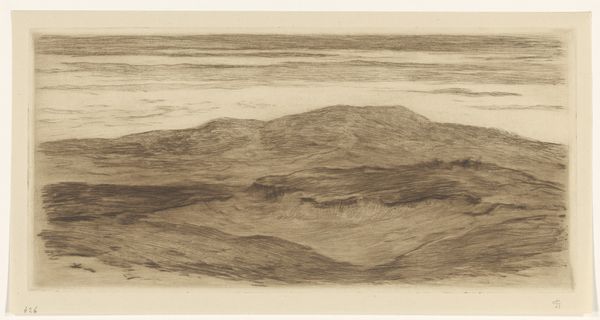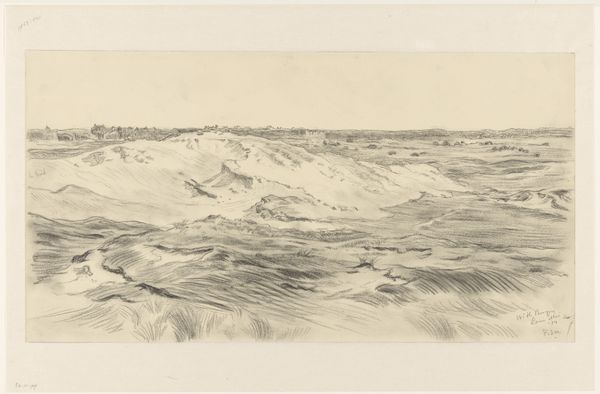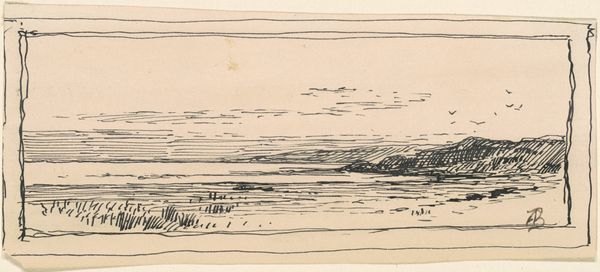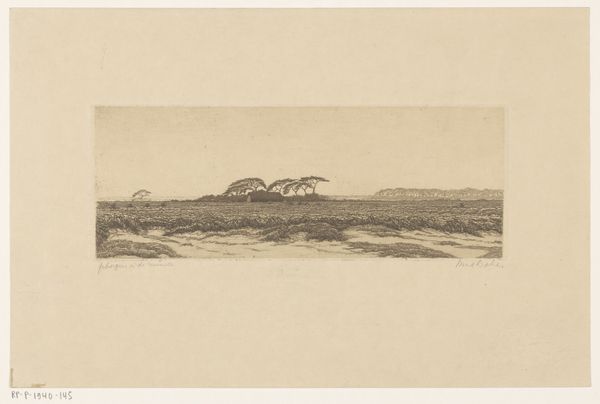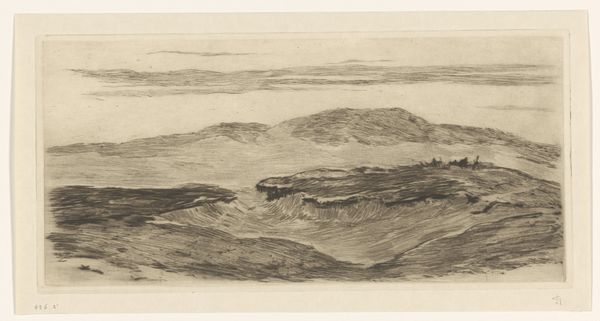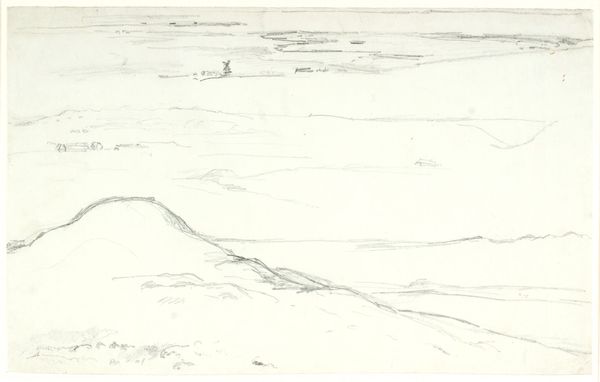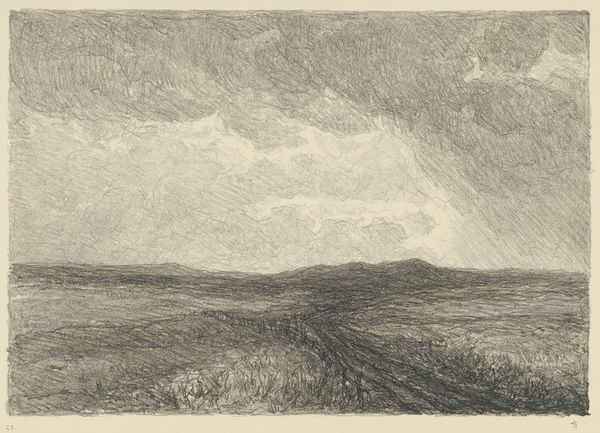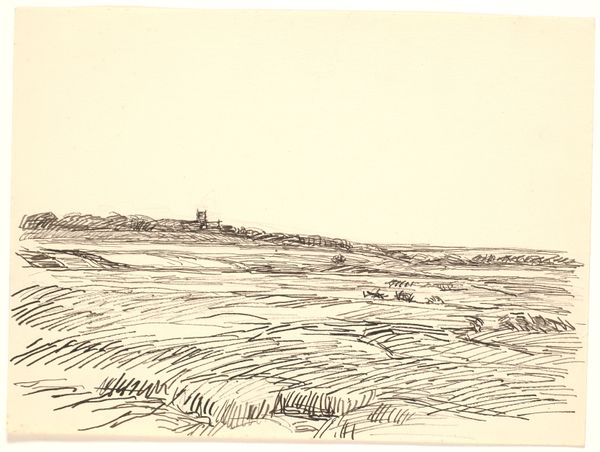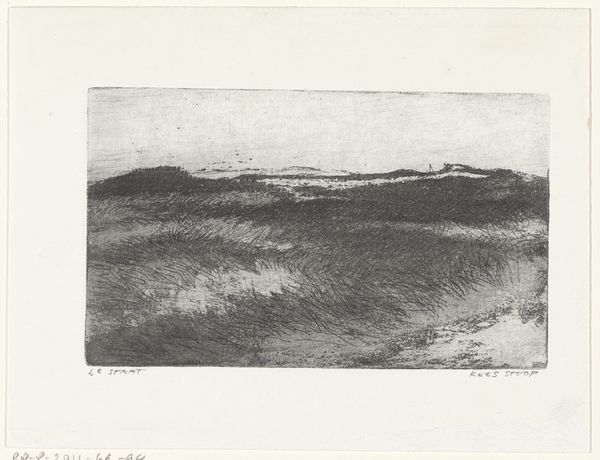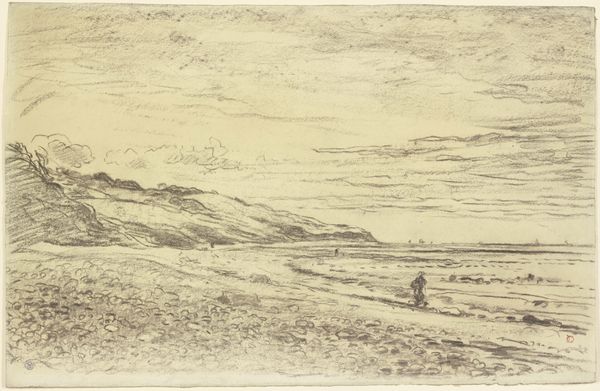
print, etching
# print
#
etching
#
landscape
#
etching
#
realism
Dimensions: height 192 mm, width 498 mm
Copyright: Rijks Museum: Open Domain
Curator: Welcome. Here we have “Strand,” an etching that’s attributed to Maurits van der Valk, made sometime between 1867 and 1918. The print offers a glimpse of a beach landscape. Editor: My initial reaction is one of quiet desolation. The pale grays, the seemingly endless stretch of sand…it evokes a sense of loneliness, of being dwarfed by the vastness of nature. Curator: It’s interesting that you perceive loneliness, because the beach is often seen as a place of transition, of the subconscious meeting the conscious. Sand itself, especially in psychological terms, represents time. Given the likely period in which this was made, one might associate it with the shifting sands of European politics and identity at the fin de siecle. Editor: That's a compelling reading. Technically, I’m drawn to the artist’s use of line. See how the fine, delicate lines create texture in the sand and the wispy clouds in the sky? It’s an economy of means, a precise rendering of a complex scene. Curator: Etchings lend themselves particularly well to the emotional landscape. The starkness, combined with the lines you note, suggests a removal of extraneous detail that encourages deeper personal reflection. Look, for example, at how Van der Valk portrays human figures at a great distance. Their reduced scale symbolizes perhaps our limited influence in the face of larger historical, or even existential forces. Editor: And those repetitive lines suggesting the ripples and textures of sand...almost meditative, aren't they? There's a deliberate flattening of perspective that enhances that contemplative mood. He isn't trying to create a photorealistic rendering; it’s more about the experience of *being* in this place. Curator: The rhythmic nature of the waves, rendered as repeated lines, speaks to a natural order, maybe an eternal return. Remember too that beaches often serve as places of mourning and contemplation within art and literature—a physical space where past and future blur, reminding us of mortality and the transience of life. Editor: Thinking about it now, it makes me see beyond simple desolation, to an acceptance—an appreciation, almost—of that quiet, profound sense of solitude. Curator: Precisely. This artwork isn't just a visual depiction, but an emotional space. The image becomes a visual invitation for each of us to interpret.
Comments
No comments
Be the first to comment and join the conversation on the ultimate creative platform.
